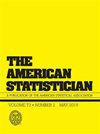A comparative analysis of Phase I dose-finding designs incorporating pharmacokinetics information
IF 2.1
4区 数学
Q1 STATISTICS & PROBABILITY
引用次数: 0
Abstract
In early clinical trials, incorporating biological mechanisms of drug action in model-based drug development may improve Phase I success rates compared to approaches neglecting established mechanisms. Our goal is to investigate how pharmacokinetics (PK) knowledge is introduced in dose-finding methods and assess the performance of Bayesian designs incorporating PK data to estimate toxicity and robustness to misspecifications. Following a literature review, three approaches to integrate PK data into toxicity estimation were selected. The first approach assumes a normal distribution for the Area Under the Curve (AUC). The second method estimates a population PK model from longitudinal concentration data to compute the AUC for each patient. The third considers latent PK profiles to measure drug exposure. Different scenarios were implemented reflecting assumptions about the maximum tolerated dose (MTD) position and misspecifications in PK exposure measures or the PK model. Dose-finding methods were compared using the probability of correct MTD selection and the estimated probability of toxicity at each dose. PK dose-finding designs performed well in terms of accurate MTD selection and were at least as effective as a method without PK. They were robust to underlying PK model misspecification and incorrect exposure measure. Additionally, these methods can assess the dose-toxicity curve.结合药代动力学信息的I期剂量寻找设计的比较分析
在早期临床试验中,与忽略既定机制的方法相比,在基于模型的药物开发中纳入药物作用的生物学机制可能会提高I期成功率。我们的目标是研究如何将药代动力学(PK)知识引入剂量测定方法,并评估结合PK数据的贝叶斯设计的性能,以估计毒性和对错误规格的稳健性。根据文献综述,选择了三种将PK数据整合到毒性估计中的方法。第一种方法假设曲线下面积(AUC)为正态分布。第二种方法根据纵向浓度数据估计群体PK模型,计算每位患者的AUC。第三种方法考虑潜在的PK谱来测量药物暴露。不同的情景反映了对最大耐受剂量(MTD)位置的假设和PK暴露测量或PK模型的错误规范。使用正确选择MTD的概率和每个剂量下毒性的估计概率对剂量测定方法进行比较。PK剂量查找设计在准确的MTD选择方面表现良好,至少与没有PK的方法一样有效。它们对潜在的PK模型错误规范和不正确的暴露测量具有鲁棒性。此外,这些方法还可以评估剂量-毒性曲线。
本文章由计算机程序翻译,如有差异,请以英文原文为准。
求助全文
约1分钟内获得全文
求助全文
来源期刊

American Statistician
数学-统计学与概率论
CiteScore
3.50
自引率
5.60%
发文量
64
审稿时长
>12 weeks
期刊介绍:
Are you looking for general-interest articles about current national and international statistical problems and programs; interesting and fun articles of a general nature about statistics and its applications; or the teaching of statistics? Then you are looking for The American Statistician (TAS), published quarterly by the American Statistical Association. TAS contains timely articles organized into the following sections: Statistical Practice, General, Teacher''s Corner, History Corner, Interdisciplinary, Statistical Computing and Graphics, Reviews of Books and Teaching Materials, and Letters to the Editor.
 求助内容:
求助内容: 应助结果提醒方式:
应助结果提醒方式:


